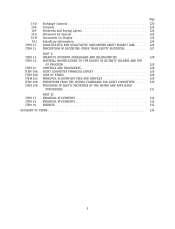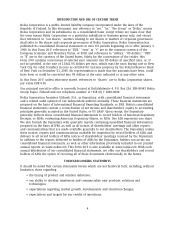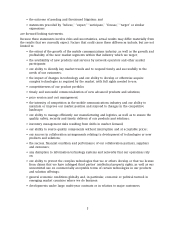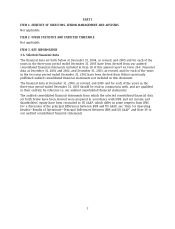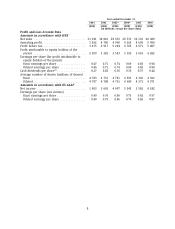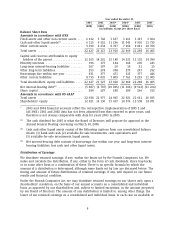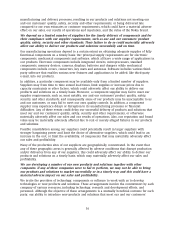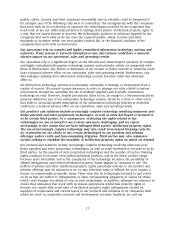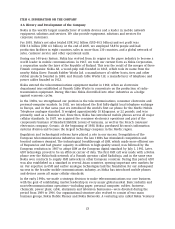Nokia 2005 Annual Report Download - page 15
Download and view the complete annual report
Please find page 15 of the 2005 Nokia annual report below. You can navigate through the pages in the report by either clicking on the pages listed below, or by using the keyword search tool below to find specific information within the annual report.past performance in our established market segments does not guarantee our success in these
new market segments.
We need to understand the different markets in which we operate, and meet the needs of
our customers, which include mobile network operators, distributors, independent retailers,
corporate customers and end-users. We need to have a competitive product portfolio and to
work together with our operator customers to address their needs. Our failure to identify
key market trends and to respond timely and successfully to the needs of our customers may
have a material adverse impact on our market share, business and results of operations.
We serve a diverse range of mobile device and infrastructure customers, ranging from mobile
network operators, distributors, independent retailers, corporate customers to end-users, across a
variety of markets. In many of these markets, the mobile communications industry is at different
stages of development, and many of these markets have different characteristics and dynamics, for
example, in terms of mobile penetration rates and technology, feature and pricing preferences.
Establishing and maintaining good relationships with our customers, including both our mobile
device customers and our networks infrastructure customers, and understanding trends and needs
in their markets require us to constantly obtain and evaluate a complex array of feedback and
other data. We must do this efficiently in order to be able to identify key market trends and user
segments and address our customers’ needs proactively and in a timely manner, for example
through launching our products at optimal times to meet customer requirements and preferences,
while taking into account the availability of competitors’ products. If we fail to analyze correctly
and respond timely and appropriately to customer feedback and other data, our business may be
materially adversely affected.
Certain mobile network operators require mobile devices to be customized to their specifications
with certain preferred features, functionalities or design and co-branding with the network
operator’s brand. We believe that customization is an important element in increasing operator
customer satisfaction, and we are working together with operators on product planning, as well
as accelerating product hardware and software customization programs. These developments may
result in new challenges, such as the need for us to produce mobile devices in smaller lot sizes,
which can impede our economies of scale, or the potential for the erosion of the Nokia brand,
which we consider to be one of our key competitive advantages.
In order to meet our customers’ needs, we need to maintain a competitive product portfolio. For
Nokia, a competitive mobile device product portfolio means a broad and balanced offering of
commercially appealing mobile devices with attractive features, functionality and design for all
major consumer segments and price points supported by the Nokia brand, quality and competitive
cost structure. The competitiveness of our product portfolio is also influenced by our ability to
communicate about our products and services effectively through consistent and focused
marketing messages to the target audience. If we do not achieve and maintain a competitive
portfolio, we believe that we will be at a competitive disadvantage, which may lead to lower
revenue and lower profits.
The competitiveness of our portfolio is also influenced by the value of the Nokia brand. A number
of factors, including actual or even alleged defects in our products and solutions, may have a
negative effect on our reputation and erode the value of the Nokia brand.
We must develop or otherwise acquire complex, evolving technologies to use in our business.
If we fail to develop or otherwise acquire these complex technologies as required by the
market, with full rights needed to use in our business, or to successfully commercialize such
technologies as new advanced products and solutions that meet customer demand, or fail to
do so on a timely basis, this may have a material adverse effect on our business, our ability
to meet our targets and our results of operations.
13


